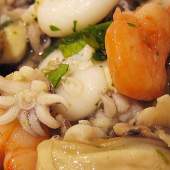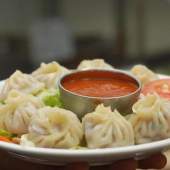Pasta

“Everything you see, I owe to spaghetti.”
--Sophia Loren
“Yankee Doodle went to town, a-riding on a pony,
Stuck a feather in his cap and called it macaroni.”
--“Yankee Doodle Dandy”
With apologies to Jane Austen, it is a truth universally acknowledged that a big plate of really good pasta can make almost anything better. Of course, many countries and cultures across the globe figured this out long ago, as there are local interpretations of pasta everywhere – think Polish pierogi, Greek pasticcio and orzo, Israeli ptitim, Argentinean sorrentinos, and Hungarian and German spaetzle, to name just a few. The World of Food previously touched on this essential culinary mainstay in our treatise on Italy, (how could you not?), but there’s a lot more to know about pasta, starting with…
Where did it get its name? Not surprisingly, it is Italian in origin – “pasta” translates to “paste,” more than likely due to the texture of its dough, which is made from coarse durum wheat flour combined with water (and sometimes eggs, depending on the recipe). Blend these together and you will get a sticky and “pasty” concoction which is then rolled out, dried, cut or molded into shapes, and cooked. By the way, the use of durum wheat, or semolina, flour is what differentiates pasta from noodles.
When did it come into being, and where did it come from? The answer to the first question is that nobody knows for sure, but there are references to it as far back as the ancient Etruscans. As with so many foods that have been around for centuries, though, there are myths associated with the creation of pasta -- the most popular one being that it originated in China and was brought back to Italy by Marco Polo in 1271. According to History Magazine, this is probably due to “a misinterpretation of a famous passage in Polo’s Travels. In it, Polo mentions a tree from which something like pasta was made. It was probably the sago palm, which produces a starchy food that resembles, but is not pasta.” The idea of a “pasta tree” is a fun one (and wouldn’t you love to have one?), but given that cooks in Sicily were already coming up with pasta-making techniques before Polo was born, this story is easily debunked.
Fun fact: pasta was originally a luxury, mainly the province of the wealthy and privileged. As it began to be mass-produced it became much cheaper to make, whereupon pasta became a mainstay for the lower classes, who were thereafter sometimes referred to as “macaroni eaters.”
How did pasta make it to America? While it was likely Spanish settlers who brought it with them during their migration, it was our epicurean President, Thomas Jefferson, who played a major role in popularizing it in the United States. During an extended European trip in the mid-1780s, he grew so fond of “macaroni” that he brought a stockpile of it back home, eventually ordering pasta-making machines for the kitchens at his beloved Monticello. (We may also have him to thank, in part, for mac 'n' cheese.)
When did marinara sauce meet up with pasta? It happened surprisingly late in the game – its creation had to wait until the late 16th century, when tomatoes arrived in Italy from the New World. Its name comes from marinai, which translates to “sailors” in Italian – a nice tribute to the men on whose ships the fruit (yes, fruit!) was imported. Indeed, given that the sauce required only tomatoes and such non-perishable items as dried herbs, olive oil, and garlic, these men may have been the first to enjoy it during their voyages.
Fun fact: pasta sauces (which will be covered in more depth in a future installment) were not necessarily savory – there are records of sauces made with sugar, cinnamon, and nutmeg, among other ingredients. This, of course, is not exactly on trend today, but last December, Miss Ricky’s in Chicago’s Virgin Hotel offered a version of the movie Elf’s iconic “breakfast spaghetti” for the holidays, made of (brace yourself!) spaghetti “topped with strawberry and raspberry sauces, marshmallows, s’more Pop-Tarts, M&Ms, Oreos, Fruity Pebbles, coconut flakes, syrup, and chocolate sauce,” according to The Takeout.
If that isn’t to your taste, as Lady and Tramp would agree, you can never go wrong with a simple plate of pasta (with or without meatballs).





